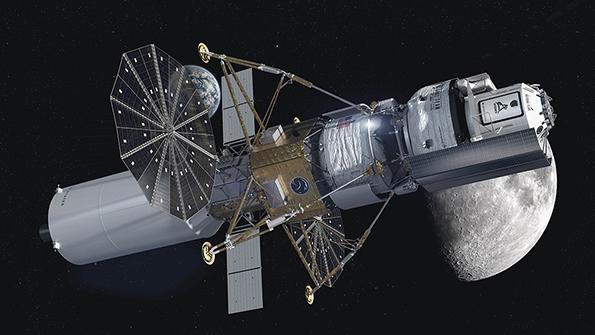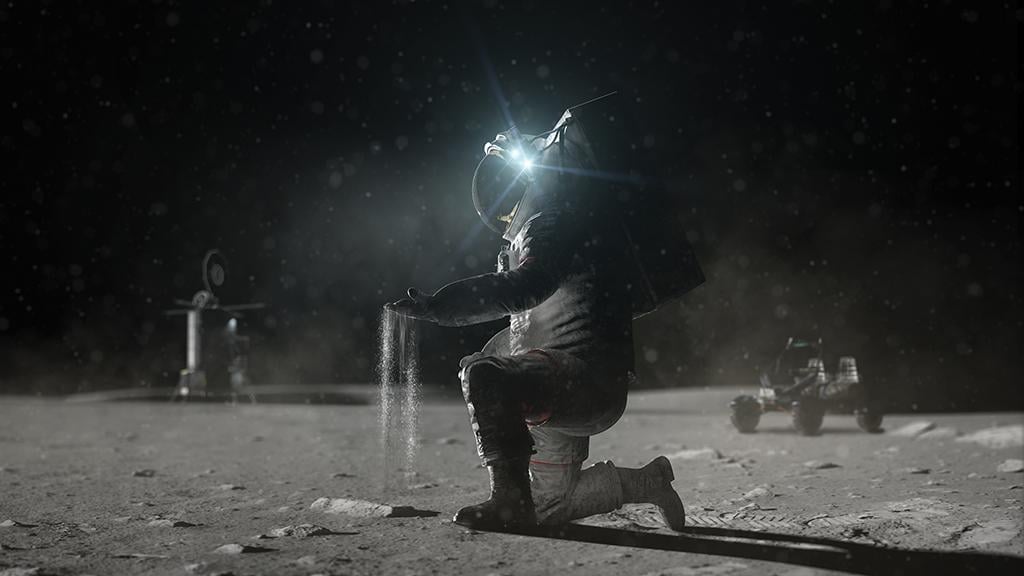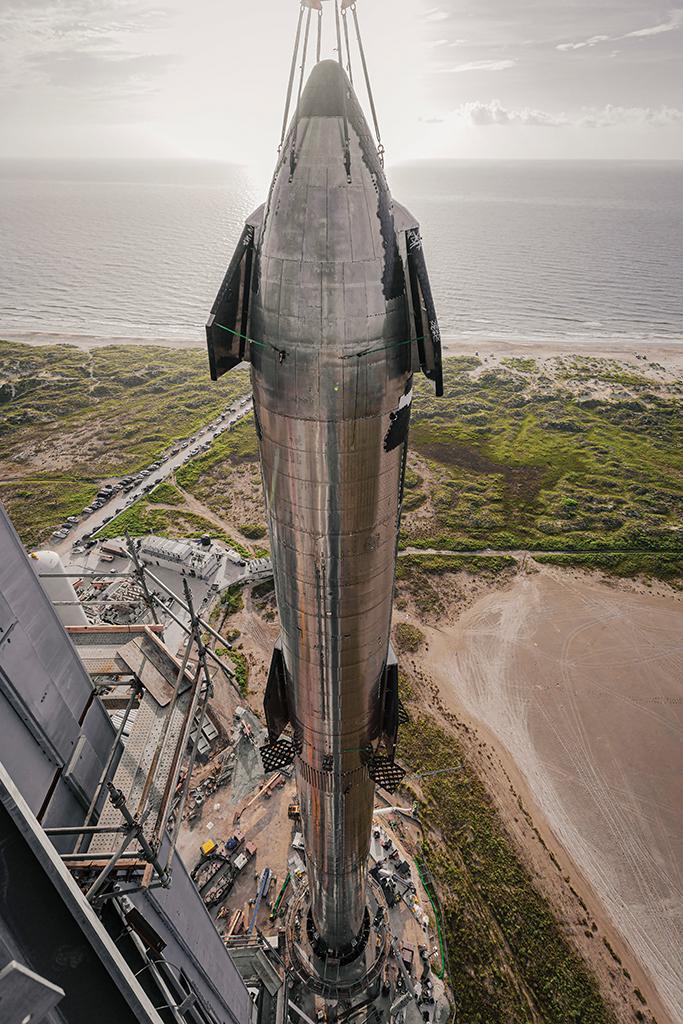Human Landing System, Spacesuits Latest Challenge To 2024 Moon Goal

NASA has said all along that landing astronauts on the surface of the Moon by 2024 was going to be a challenge, but that was no reason to bypass the directive issued by the former Trump administration.
So NASA stuck with the plan even when budget allocations for a Human Landing System (HLS) fell short, opting to prioritize schedule over maintaining competition, a central tenet of its procurement strategy.
- Blue Origin contends selection process for HLS is flawed
- Spacesuits expected no earlier than April 2025
Building on the public-private partnerships that produced two International Space Station (ISS) cargo delivery systems (and a third nearing operations) and two systems for crew transportation, NASA planned to leverage taxpayer money with investments by two industry teams interested in building and operating human lunar landing systems.
Citing budget shortfalls, the agency last year chose just one company—SpaceX—for an HLS flight demonstration, sparking protests to the Government Accountability Office (GAO) by the losing bidders.
The GAO dismissed the claims on July 30, but in studying the ruling, competitor Blue Origin says it learned NASA had modified flight readiness review requirements (FRR) for SpaceX. The GAO said SpaceX needed 16 launches to deliver and fuel its Starship HLS for a lunar flight demonstration, all of which initially required an FRR.
Blue Origin says eliminating most of the reviews significantly reduced SpaceX’s costs and sped up its deployment schedule, advantages that were not proffered to competitors. “Our perspective is NASA should have talked to all of the offerers to find out what we could do to modify our price in order to meet their funding constraints,” a Blue Origin spokesperson tells Aviation Week.
Ahead of the GAO ruling, Blue Origin founder Jeff Bezos offered to cover an additional $2 billion of his company’s HLS development costs during the first two years of the program, demonstrating how NASA could have selected a second provider as it awaited additional requested funding from Congress.
Legislators appropriated just $850 million of NASA’s $3.4 billion request for HLS development in fiscal 2021. NASA Administrator Bill Nelson is calling on Congress to provide funding for additional HLS development in the infrastructure/jobs bills now before Congress.

Blue Origin upped the stakes on Aug. 16, filing a lawsuit in the U.S. Court of Federal Claims to protest the GAO decision. “We firmly believe that the issues identified in this procurement and its outcomes must be addressed to restore fairness, create competition and ensure a safe return to the Moon for America,” the company said in a statement.
The suit has had one immediate effect: NASA temporarily suspended its $2.9-billion HLS contract with SpaceX until Nov. 1 to provide the court time to adjudicate the case. “NASA officials are continuing to work with the Department of Justice to review the details of the case and look forward to a timely resolution of this matter,” the agency said in a statement.
The suspension followed a 100-day HLS work hiatus while the GAO reviewed bid protests filed by Blue Origin and Dynetics. But SpaceX continued the rapid development of its two-stage, reusable heavy-lift Starship launch system at its own expense.
The first 230-ft. Super Heavy rocket, outfitted with 29 methane-burning Raptor engines, was moved to its launch site in Boca Chica, Texas, on Aug. 3 and topped by a 160-ft. Starship upper stage three days later for fit checks. SpaceX is aiming for its first orbital Starship flight test later this summer or fall, pending completion of an environmental assessment and launch authorization from the FAA.
NASA has not given up on its desire for multiple HLS providers. In July, the agency issued a request for proposals to help structure a Lunar Exploration Transportation Services strategy for multiple commercial HLS providers beyond the first lunar landing, a mission still officially targeted for late 2024.
As part of the Next Space Technologies for Exploration Partnerships procurement call, NASA said it plans to seek proposals from qualified potential commercial developers and providers in 2022.
The contested HLS program is not NASA’s only impediment to landing astronauts on the Moon in 2024. Agency efforts to develop a next--generation spacesuit face significant cost and schedule challenges that will push back its availability to April 2025 at the earliest, according to an audit by the agency’s inspector general (IG) released on Aug. 10.
The Exploration Extravehicular Mobility Unit (xEMU) is being designed for astronauts assigned to explore the Moon as part of NASA’s Artemis program. The xEMU also will be used by spacewalking astronauts to maintain the space station.
“Given these anticipated delays in spacesuit development, a lunar landing in late 2024, as NASA currently plans, is not feasible,” Inspector General Paul Martin wrote in the report.

The audit found that NASA spent $420 million over 14 years to develop a new generation of spacesuits to replace the 45-year-old suits designed for work by astronauts outside the space shuttle and the ISS. The current suit lacks the mobility and dexterity needed by astronauts to move about on planetary surfaces. It also cannot accommodate a wide enough range of sizes for male and female astronauts.
Development costs of the xEMU are expected to reach more than $1 billion for one design, verification and testing suit, two qualification suits—one of which is to be demonstrated aboard the ISS—and two lunar flight suits.
As the xEMU development effort progressed, NASA in October 2019 issued a request for information (RFI) to industry to determine the feasibility of a hybrid contract strategy that was to include a prime contractor for integration and multiple contractors for individual components, according to the audit.
The effort was canceled after 18 months. A new RFI, issued in April, gives commercial industry the option of leveraging NASA’s design work or proposing its own. The current solicitation also lifts a requirement that a new spacesuit support both the ISS and lunar exploration, which may not prove cost-effective, the GAO audit notes.
As part of its assessment, the IG made four recommendations, each winning promises of concurrence from Kathy Lueders, associate administrator for human exploration and operations:
- By this October, complete technical requirements for the new suits before selecting an acquisition strategy.
- By this October, develop a spacesuit acquisition strategy that meets the needs of both the ISS and lunar exploration.
- By June 2022, reduce development risks as much as possible when NASA establishes a new date for Artemis III, the mission officially still slated for 2024, that will return astronauts to the lunar surface for the first time since 1972.
- Ensure that at least the first two xEMU suits also can be used to address ISS priorities.
The audit also advises NASA to develop an integrated schedule for hardware delivery and training for the lunar-orbiting Gateway, HLS, ISS and oversight by the agency’s Flight Operations Directorate.
NASA’s lunar-orbiting, human--tended Gateway is to serve as a small space station for astronauts launched aboard the Space Launch System (SLS) rocket and Orion capsule. At the Gateway, assembly of which is to begin in late 2024, astronauts are to board a commercially provided HLS to be shuttled to the lunar surface and back.
The IG’s finding alone—on top of uncertainties surrounding the availability of a commercial lunar landing system—appear to preclude a return to the Moon by 2024. But those issues may be eclipsed by a more immediate hurdle: the flight test of NASA’s first SLS rocket. After a decade of development, the Saturn V-class rocket is due to lift off by year-end to send an Orion capsule around the Moon on Artemis I. That would be followed no earlier than September 2023 by Artemis II, an SLS-Orion crewed flight test, ahead of the Artemis III lunar landing mission.


